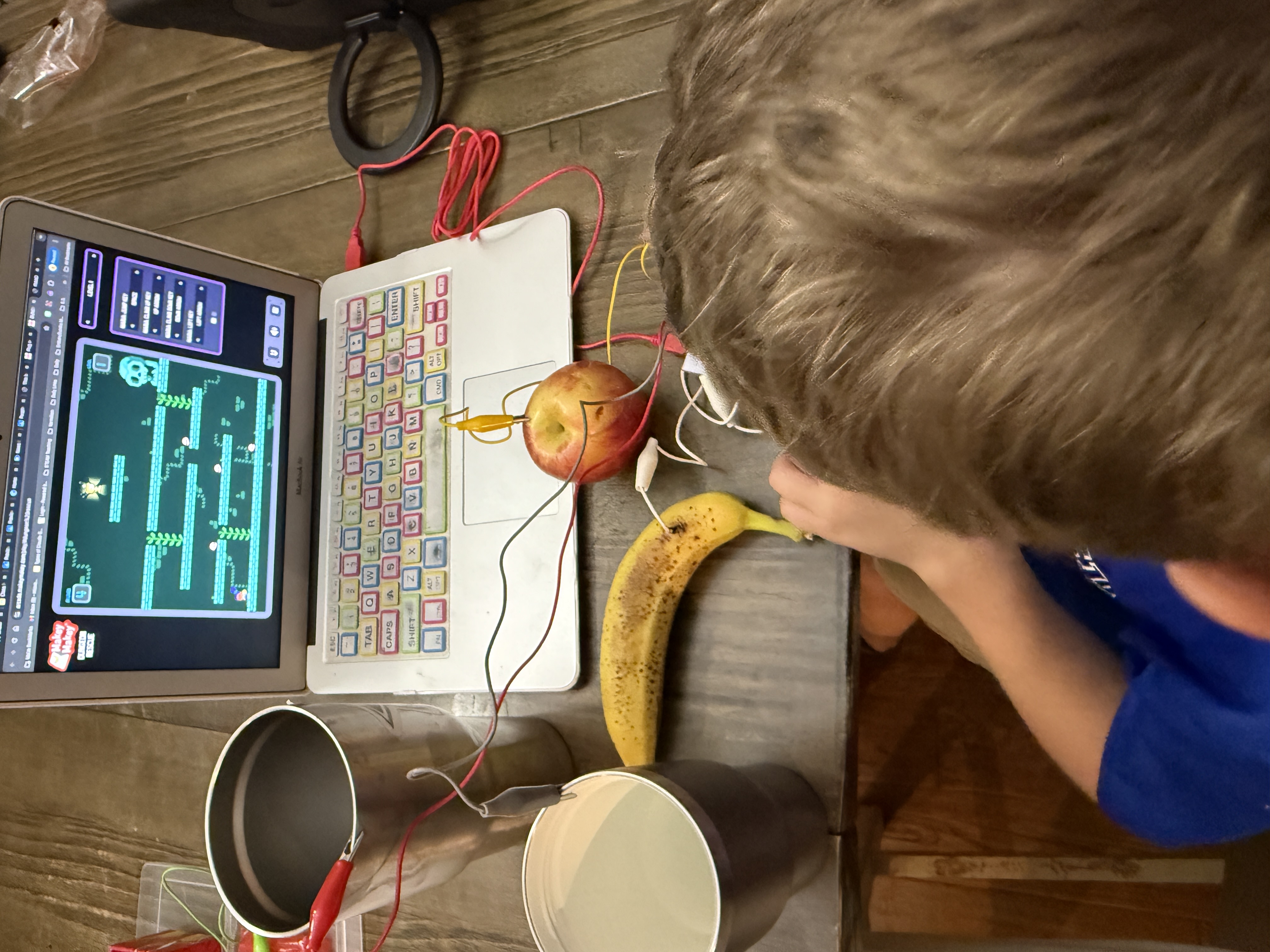MACE Mini-Grants
Apply for a MACE Mini-Grant
Tired of dipping into your own pocket for essential EdTech resources? 💸 The MACE Mini-Grants are officially OPEN! We provide funding for hardware, software, and innovative classroom projects. Stop scrolling and start planning your funded project. Learn more and apply today!
-
Mace Mini-Grant Application
Ready to turn that perfect classroom technology idea into reality? Click on the heading and use the form to apply. The application is quick, the award goes personally to you, and the only requirement is sharing your success.Don't let this $500 opportunity pass you by. Apply now and bring that essential technology into your classroom this year!

Technology Mini-Grants for Educators (2024-2025)
We're excited to announce the opportunity for educators to secure funding to purchase technology that might otherwise be unavailable for their classrooms and schools.
Grant Details
For the 2024-2025 school year, four $500 grants will be awarded through MACE.
Please Note: All grant awards will be made directly to the individual awardee, not the district, building, or organization. We strongly recommend checking with your district to understand their local policy regarding the acceptance of individual awards and funds.
Requirement for Grant Winners
Awardees will be required to film a short video demonstrating the use of the technology purchased with the grant money. This video will be shared with MACE for use on our social media channels and at our annual conference.
Applications Open Now!
-
Madi Anderson
Maize USD 266
K-4 STEAM
We aim to create a student-driven STEAM Broadcasting Club using podcasting tools where students can express their voices, develop communication skills, and learn media production techniques.
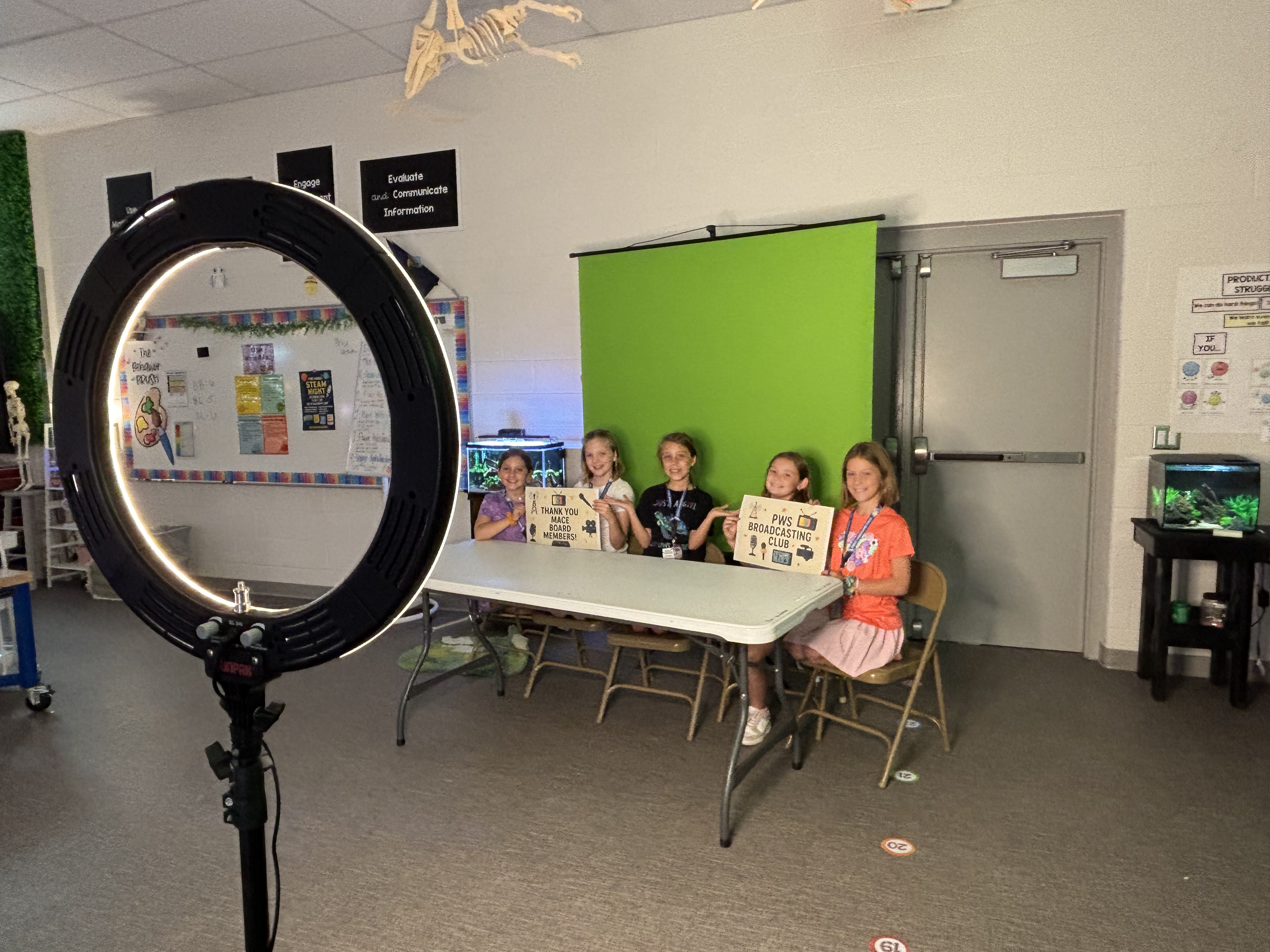
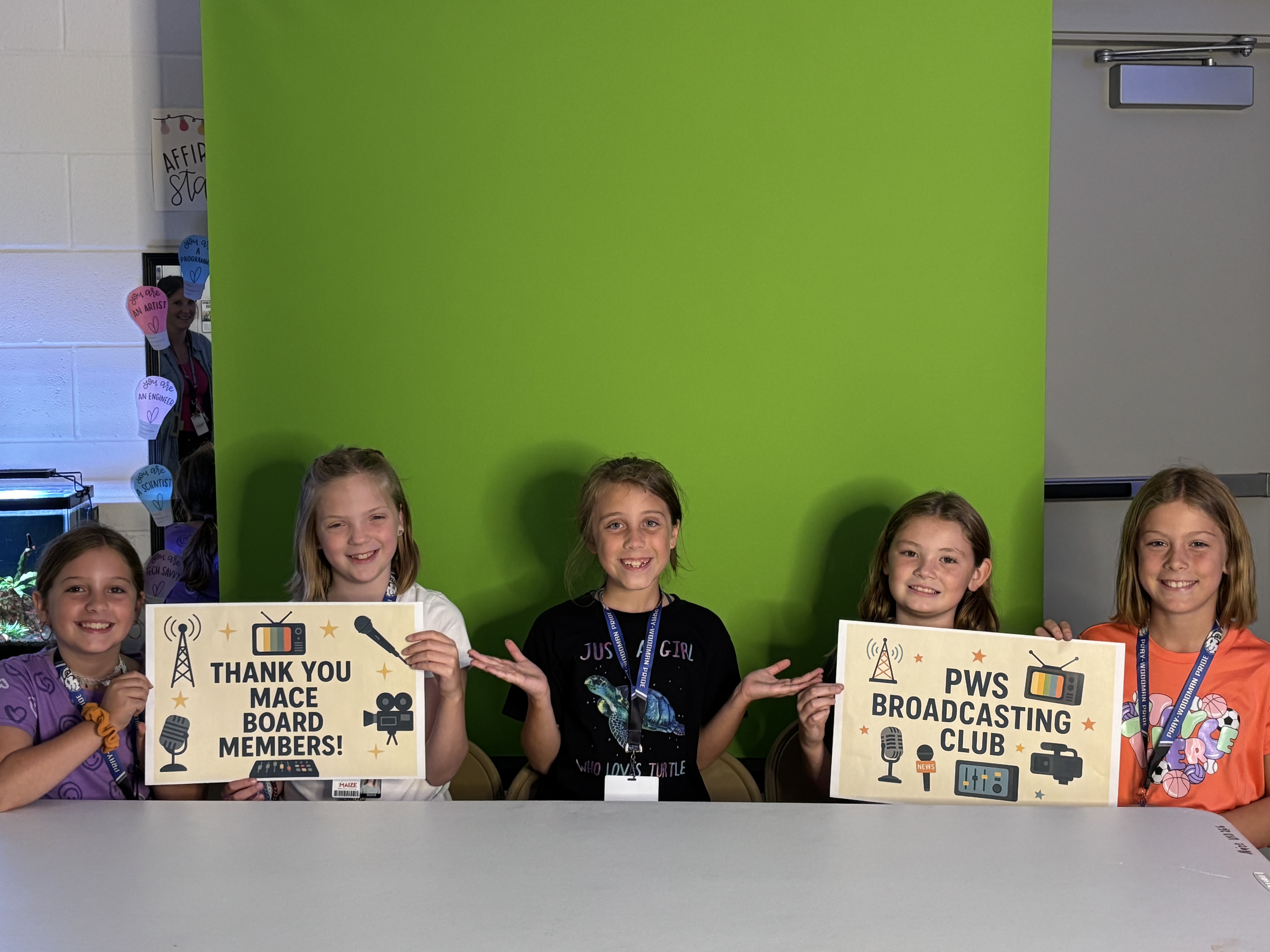
On behalf of Pray-Woodman Elementary, I want to extend our deepest gratitude for awarding us the $500 mini-grant that has made the launch of our student-driven STEAM Broadcasting Club possible. This opportunity, while still in its beginning stages, is already transforming our classroom by giving students a platform to express their voices and build confidence, while students can also work to develop basic media production skills.
Students will not only learn how to create professional-level broadcasts, but they are also gaining valuable experience in teamwork and problem-solving. Your support is helping us prepare students to thrive in both academic and future career settings.
In the pictures attached to this email, you will see five excited members of our team posing with our brand-new green screen, ring light, and shirt microphones—equipment made possible thanks to your generous grant. These 4th grade students are eager for the first broadcast to air.
This grant is more than just funding for equipment—it is an investment in student voice and creativity!
Thank you for believing in our kids and for supporting innovative opportunities that will shape their learning for years to come.
With sincere appreciation,
Madison Anderson
K–4 STEAM Teacher
Pray-Woodman Elementary -
Melissa Love
Maize USD 266
K-4 STEAM
Using Makey Makey kits students will be able to understand coding, how circuits work, and use interactive designs. Students will also use 21st-century skills such as critical thinking, collaboration, and creativity.
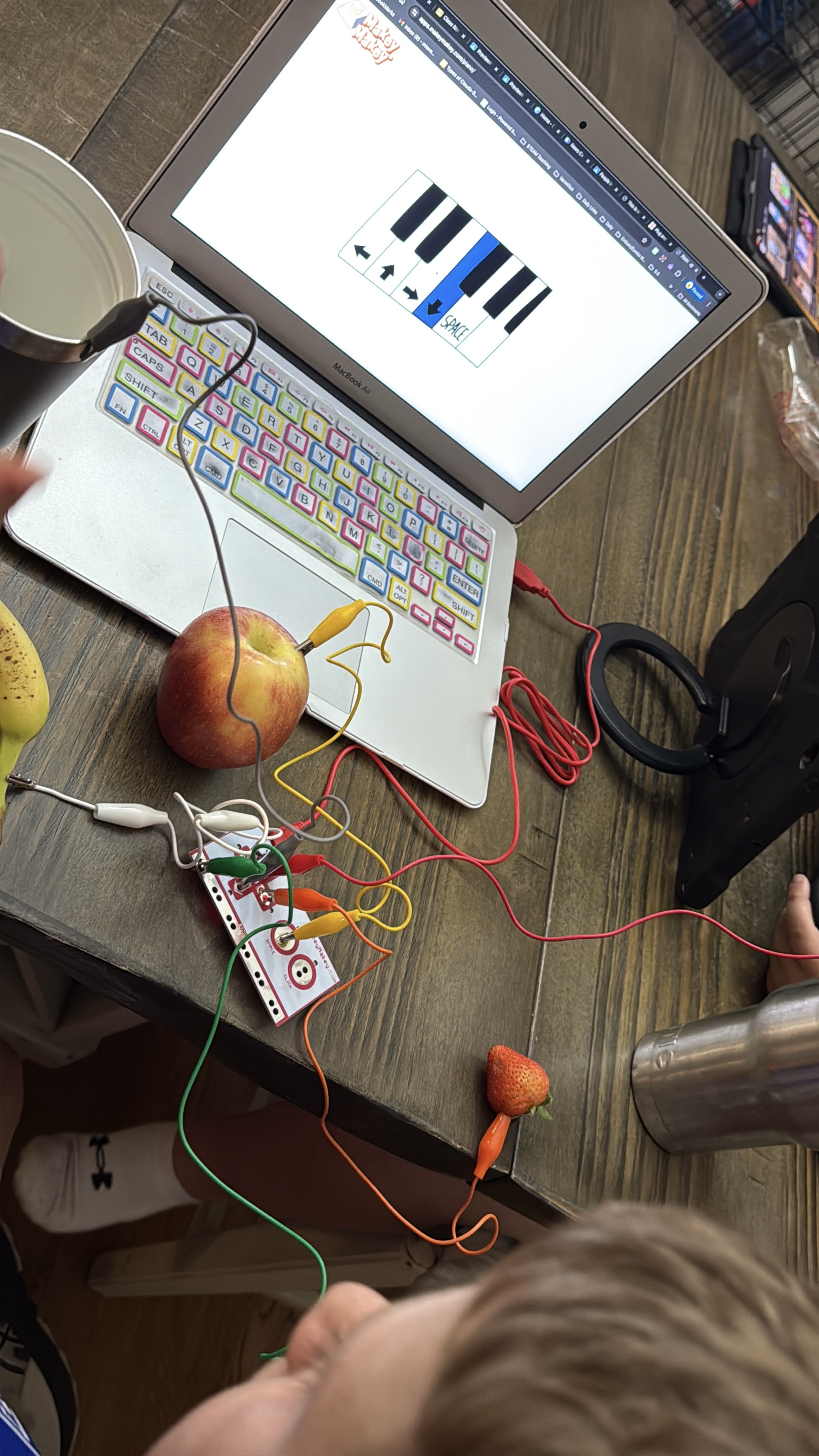
Thanks to the MACE grant funding, we're bringing Makey Makey Circuit Kits to the classroom! These tools let kids turn everyday things like fruit and cups into computer touchpads, making the science of conductors and circuits immediately interactive. Students have used a banana, strawberry, apple and metal cups. We'll be using them again in elementay science this fall to give students a fun, hands-on way to master circuit concepts.
-
Cris Adams
Beloit USD 273
K-6 STEM
Merge Cubes will provide a hands-on digital learning platform that helps students learn science and STEM effectively with 3D objects and simulations they can touch, hold, and interact with.
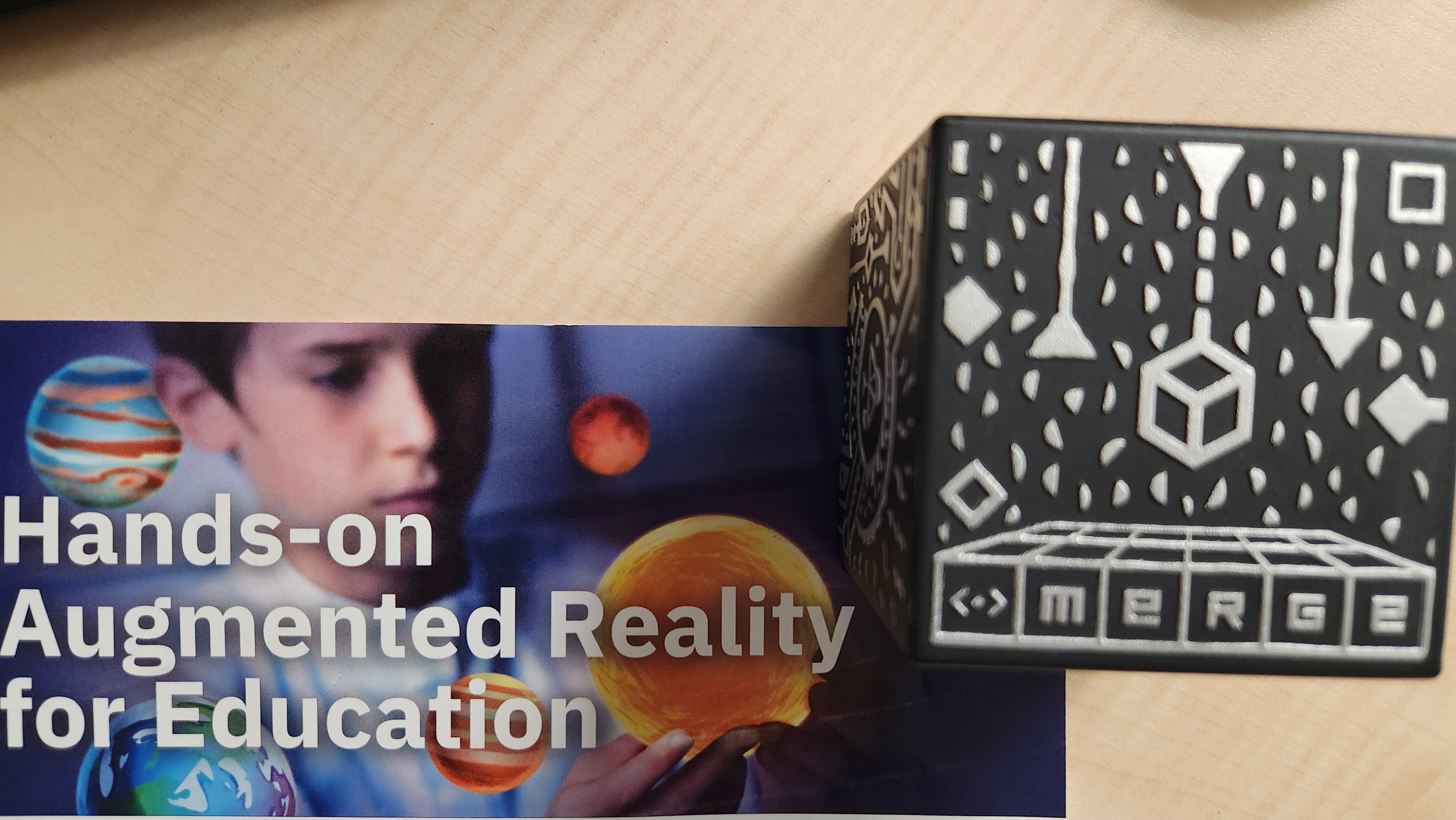
Thank you to MACE and the wonderful people that run this organization. The MACE grants for teachers is a fantastic opportunity to purchase technology items for students that normally wouldn't be possible on such a tight budget...those of us in education understand! I have won this award a few times and each time it has helped many students in our entire school as I teach K-6 Stem. The Merge Cubes will provide a hands-on digital learning platform that helps students learn science and STEM effectively with 3D objects and simulations they can touch, hold, and interact with. I can say without hesitation that MACE cares about educators and it's honestly the conference I look forward to every year.
-
Laura Leis
Smoky Valley USD 400
Students can use micro bit controllers, which are simplified computers, to create new products or solve real-world problems. Some of the activities will include making wearable electronics to count softball pitches, count and record several items picked up, or light up to the beat of the music. Students can also use features like GPS to create a collar for their dog that tracks their movements throughout the day.
-
2024 Mini-Grant Winners
Christine Fouts, USD 273: Technology/STEM
Technology is changing every single day and to stay ahead of the curve the BJSHS STEM (Science, Technology, Engineering, and Math) program will constantly be needing new technology pieces to integrate into the classroom every year. A part of my STEM class is learning through robotics and coding. This is preparing our students for the future. They start off with basic coding skills in 7th grade and get more advanced as they progress through my class learning coding, programming, engineering, and collaboration/problem solving skills. Teaching them coding could be very beneficial to them in their future job careers. Our world is becoming more technologically advanced every day and robots are becoming a part of our future. Jobs that we have today will be replaced by robots and a lot of the future jobs will involve maintaining, programming, and running robots.
Susie Klausmeyer, Catholic Diocese of Wichita: Computer Science
The objective of this grant is to enhance and enrich the computer science and technology education curriculum for K-8 students by acquiring a 3D printer. The 3D printer will serve as a hands-on tool to promote creativity, problem-solving skills, and a deeper understanding of computer science concepts among students. Through the integration of 3D printing technology, my goal is to:
Promote Computational Thinking: Foster the development of computational thinking skills by engaging students in designing and creating 3D models. This process will involve breaking down problems, recognizing patterns, and implementing logical solutions.Encourage STEM Education: Integrate 3D printing as a tangible application of STEM (Science, Technology, Engineering, and Mathematics) concepts, providing students with real-world examples of how these disciplines intersect.
Jewelia Oswald, USD 501: Library Media
In collaboration with graphics arts teachers, we'd like to encourage students to create their own graphics designs to put on t-shirts to sell or give away. This would be a project-based learning experience. This activity would offer opportunities for students to employ Technical Proficiency, Creative Expression, Entrepreneurial Skills, and Quality control.
Emily Stiles, USD 232: Technology Innovation Specialist
My goal is for all K-5 students to use the Stikbots to create more innovative stop motion animation stories. I work with art (students create landscape backgrounds) and music (students compose their own tune using Chrome music lab) to have students produce a stop motion animation film. Students publish their stop motion animation and then we show them during our annual STEAM night for families. I see all the students in the school once per week, so all students would have access to them. Classroom teachers could also borrow them to utilize in the gen ed setting as well.
Past Mini-Grant Winners
Cris Adams, USD 273: STEM/Technology (2022)
As with all STEM Education, it is my goal and responsibility to bring to light all phases of technology to our students as the STEM field is growing rapidly. We have had some drones in the past, but they tend to break easily and need replacing from time to time. I want my curriculum to be innovative and cutting edge. This type of hands-on education not only builds critical thinking and problem solving skills, but real-world technical skills. It also builds cognitive development and reasoning skills. Combined with these skills it can also develop the excitement of how physical laws work and a love for electronics. These are trades and skill applications needed in real-world technical fields.
Cris Adams, USD 273: STEM/Technology (2020)
Today’s students need to build relevant ways of thinking and working which will prepare them for tomorrow’s challenges. With Sprout Pro, our students will be empowered to reinvent and have fun doing it. We already have 3D printers and design software, and this would be another way to scan images for learning. With our Library/Technology Redesign in progress this would be a perfect station for learning. The Sprout Pro offers an accessible, engaging platform for exploration and creativity that can extend and enrich our curricular content, while increasing self-directed student engagement driven by inquiry-based and personalized learning. Sprout Pro also provides students with a means of creating their own learning tools. In its unique ability both to turn any 2D or 3D object into a visual representation or to support the creation of new physical objects via a 3D printer, Sprout Pro can be an integral piece of the personalized learning experience .
Jason Crist, USD 264: Technology Integration (2020)
I have several objectives for integrating the Code-a-pillars into our Kindergarten classrooms. The first learning objective is reasoning & problem solving skills. Kids develop problem solving as they get their Code-a-pillar to go where they want. Failure is part of programming. The continuous iteration of fail and fix is key in problem solving. The next objective is in planning and sequencing. Our students will discover that if they create the right sequence of movements, Code-a-pillar will follow the code to accomplish its goal. Lastly, I hope to begin to develop and foster critical thinking skills. By programming different combinations, our Kindergarteners can exercise critical thinking on their way to navigating the Code-a-pillar through various challenges. The Code-a-pillar provides a unique opportunity for innovative technology use in the classroom. It is a tool that can be used across all curricular areas as a vehicle for increasing engagement and enhancing learning.
Danna Daniel, USD 499: Multimedia/Technology/Graphics Design/Yearbook (2021)
I teach a Graphics Fundamentals class and am wanting to teach the students how to design using 3D software that converts to gCode and build images using the 3D Printer.
Meggan Eilert, USD 383: 4th Grade Teacher (2022)
My main goal is to help with protection, organization and to have fully charged iPads for all my 4th grade Smarties. (I call my students the Smarties) :)
Lisa Juel, USD 457: Social/Emotional, Reading, Math, Science Social Studies (2021)
The goal for using this technology is to provide all students an interactive virtual experience to explore not only curricular concepts but to provide needed sensory input and calming experiences, based on each individual student need.
Steven Meier, USD 372: Robotics/Coding (2020)
Currently our technology is limited to older lego sets from nearly a decade ago. These are using outdated software making their learning obsolete. With the new kits I would be able to adapt the old hardware components into current programming language and current corporate/real life usage.
Jason Russesll, USD 283: Computer Applicatins, Business, Entrepreneurship (2021)
Goals: provide CTE training on CNC equipment as it pertains to business and entrepreneurship goals in alignment with Kansas Standards.
Objective: Provide a classroom and school-wide tool that encourages further creativity in product and business creation at entry level experience and reasonable pricing.
Lisa Readman, USD 512: Library Media (2022)
As a group of librarians across the district we are wanting to film a video for the promotion of the William Allen White Nomination books for each school year. Students read the books and then write reviews to share with their peers. The lighting and microphones will help us improve the quality of our recordings and make the videos more engaging for students. There are about 20 books that are reviewed every year with multiple schools and students participating. The plan is for the 34 elementary school to share the equipment to improve the quality of videos. The equipment could also be used for other recording projects across the district as well.
Valerie Rohlman: Diocese of Wichita: Computer Science and Technology (2020)
My goal is to expand our middle school computer science curriculum to include an introduction to electronic circuits/sensors and how today's smart systems use them and be able to program those circuits and sensors. My plan would be to use Code.org's Computer Science Discoveries Physical Computing lessons with the circuit boards.

 Additional settings for Safari Browser.
Additional settings for Safari Browser.



